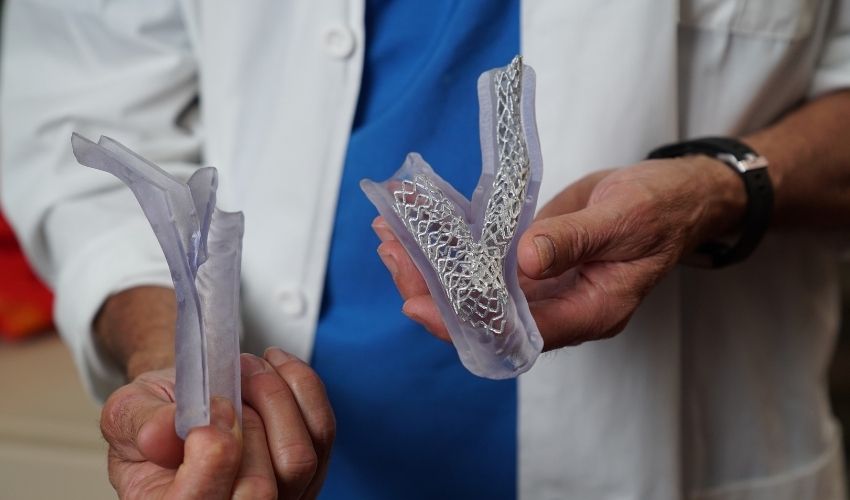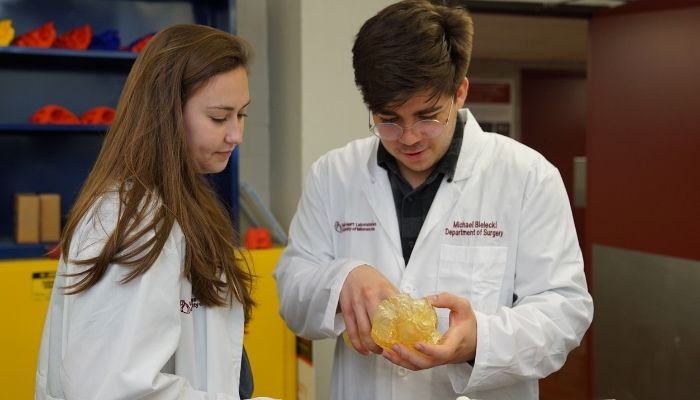University of Minnesota Medical School Receives 3D Printers to Better Study the Heart

Both education and medicine are sectors that have continuously seen the value of additive manufacturing. Now, Stratasys has combined the two, donating Stratasys J750™ Digital Anatomy™ 3D printers, as well as MakerBot METHOD X® and MakerBot SKETCH® 3D printers to the Visible Heart Laboratories at the University of Minnesota Medical School. The company hopes that these machines will enable students to learn more about the uses of 3D printing in the medical field as well as to provide further education on cardiac anatomy.
The use of 3D printing to create exact anatomical models for educational purpose or even surgery prep is not new. And depending on the technology, the models can be extremely accurate. Material jetting in particular can help replicate colors and even textures, making the experience even more accurate. And this is exactly what Stratasys has offered to the lab, as well as some FDM printers from MakerBot. Dr. Paul Iazzo, professor at Visible Heart Laboratories, University of Minnesota Medical School, confirmed the usefulness of 3D printing in their lab, commenting “Mixed reality education utilizing high resolution 3D printing greatly impacts our abilities to better educate residents, fellows, medical students, biomedical engineers and many others.”

Two students examine a replica of a heart made using Stratasys’ 3D technology (photo credits: Stratasys)
Why Did Stratasys Donate to the University of Minnesota?
In the press release, Stratasys points to a number of clear benefits that will be given to the Visible Heart Laboratories and the University of Minnesota thanks to the use of 3D printing. The first is of course for education, not just to show exact models of the heart but also to provide information for how precise anatomic models can assist physicians in their work. Not only that, but these models can also be used for patients and the medical team. Surgeons can show patients anatomical models to understand directly what is happening in their body, but also to help the surgeons plan treatment options and even surgeries. Given the number of operations that take place on the heart every year, exceeding 900,000 procedures each year in the United States and expected to grow, this is invaluable for reducing the mortality rate of some very common diseases including coronary artery disease, heart attacks, arrhythmia and more. In fact, using anatomical models could lead to better patient outcomes, reduced time in surgery, and cost savings for hospitals and healthcare facilities.
Beyond the applications for teaching and surgery, 3D printing can help in the creation of coronary medical devices as the models can help create devices mimicking actual anatomy and pathology. It will also help contribute to the University of Minnesota Atlas of Human Cardiac Anatomy. This collection contains 800 hearts which can be recrated with 3D printing for educational purposes or medical device and testing. Rich Garrity, President of Americas for Stratasys, concluded, “We believe that widespread use of 3D printed anatomic models in healthcare would translate into better and more cost-effective patient care and shorter time to market for new medical device innovations. This sponsorship allows us to support the world-class education and medical device research happening right here in Minnesota.” You can find out more in the press release HERE.
What do you think of ? Let us know in a comment below or on our Linkedin, Facebook, and Twitter pages! Don’t forget to sign up for our free weekly Newsletter here, the latest 3D printing news straight to your inbox! You can also find all our videos on our YouTube channel.
Cover Photo Credits: Stratasys






